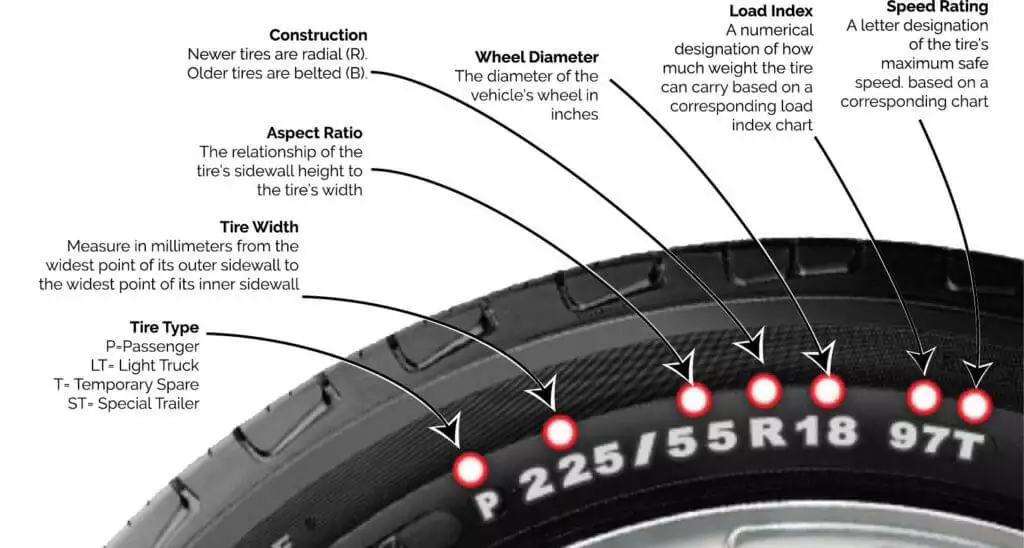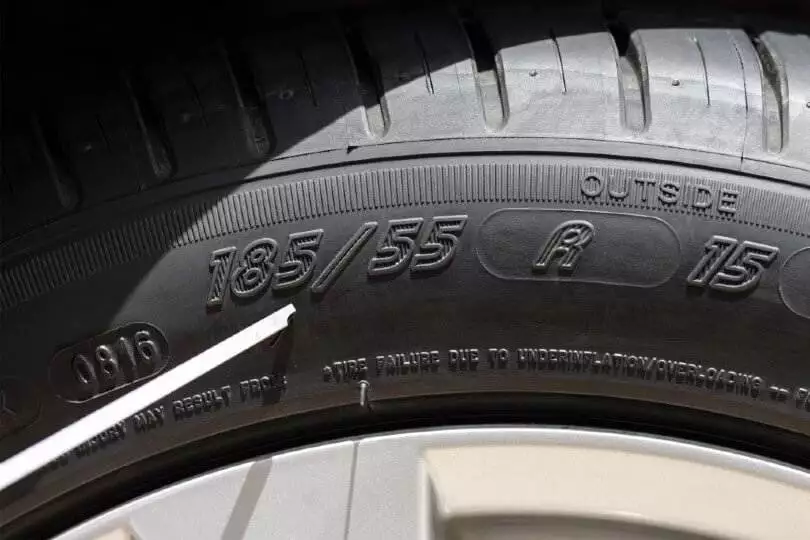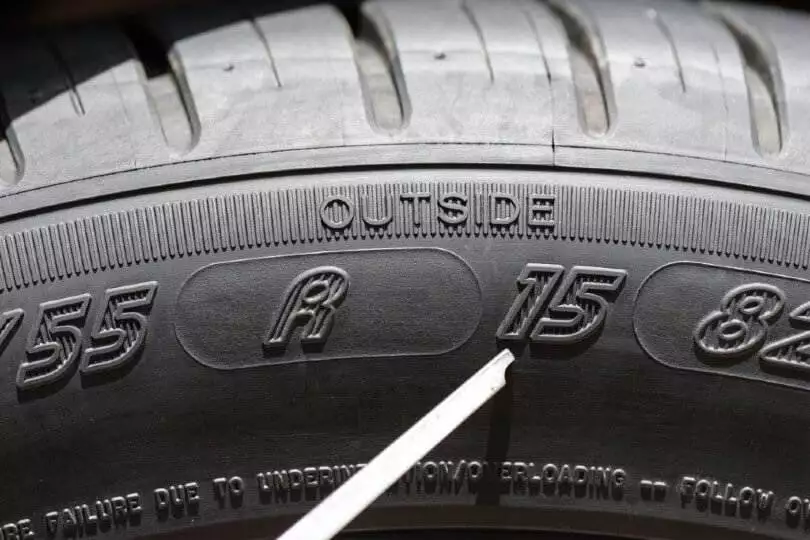Introduction
No matter how powerful the engine your car is fitted with, it all comes down to the small contact patches between tires and road. Mechanics of tires are crucial in the overall operation of an automobile. Hence understanding tires is very important.
The sidewall of the tire contains key information that tells you everything you should be familiar with. The numbers and letters can be confusing for non-technical eyes. The best way to comprehend these tire markings is to brake them down bit by bit. So how to decipher this tire jargon? Each section of these markings on a sidewall is unique and mean something.
More...
Reading Sidewall - Tire Specifications
This describes the fundamental characteristics of a tire. Type, size, construction, speed rating and more.

Tire Type/Class
The letter(s) appearing on most of the tire’s sidewall identifies the class of a tire or type of vehicle/service it is designed for. Common indicators are:
If there isn’t a letter in this portion of size, it is an indication that the tire is “Euro-Metric” size.
Section Width
Also called Tire Width, this numeric portion represents the distance measured across the tire’s widest point of its outer sidewall to the widest point of its inner sidewall. A metric tire’s section width is measured in millimeters. Since it is affected by the width of a wheel, this measurement is for the tire when it is mounted on specified wheel size.

Aspect Ratio
Two-digit numeric following the three-digit section width numeric identifies the tire’s aspect ratio or profile. This number expresses the sidewall height as a function of the section width. The aspect ratio is simply the relationship of tire’s sidewall height to tire’s width. For example, the number 60 means the tire’s sidewall height is 60 percent of its section width.
The aspect ratio is an important indicator of the tire’s performance. The smaller the aspect ratio, the wider the tire in relation to its height. Shorter sidewall height means improved steering response and better lateral stability. High-performance tires usually have a lower aspect ratio than other tires. Tires with shorter and stiffer sidewall resist forces better when a car negotiates a turn. The higher the aspect ratio, the taller the sidewall and more smooth ride.
Construction
A letter following aspect ratio number designates the tire’s internal construction, which is “radial” for R. Nearly every tire on the road has radial construction, which means the cords of the carcass plies inside the tire “radiate” out from the imaginary center of the. Other letters used are D, for diagonal or bias ply construction, where internal tire body plies crisscross diagonally and B, for belted where tire body plies not only crisscross the tire on a diagonal as before but that they are reinforced with belts under the tread area.
Wheel Diameter

The number next indicates the diameter of the wheel on which the tire is designed to fit. It is generally expressed in inches i-e 16. Tires that have wheel diameter expressed in inches are the most common type of tire sizes. While not as common, other types are still in use today. These include tires and wheels that have wheel diameter expressed in half inches i-e “15.5”. They are used on some heavy-duty trailers, trucks and box vans.
It is essential that the tire and wheel diameter is always confirmed to match before fitting the tire on the wheel.
Load Index

The load index designates the maximum amount of weight the tire is certified to carry at maximum safe inflation. It ranges from 0 to 279 and corresponds with the load-carrying capacity of a tire. For example, a number 97 doesn’t mean the maximum load-carrying capacity of 97 pounds or kilograms because it’s actually an assigned value that corresponds with its actual load capacity on a load index chart (“93” stands for 730 kilograms or 1609 pounds). Typically, the load indexes of the tires used on passenger cars and light trucks range from 75 to 130.
It is very important to maintain the proper load index for your vehicle when replacing tires.
Speed Rating
The speed rating is intended to match the speed capability of tires with a top speed capability of the vehicle to which they are applied. It indicates the maximum speed at which the tire is certified on carrying a load under specified conditions.
Speed rating ranges from A to Y with A being the lowest and with one exception that H falls between U and V. For example “S” indicates the tire can handle speeds up to 112mph.
Speed ratings refer to more than just speed. Speed ratings make a difference in regards to ride, comfort, grip, and cornering ability. Typically, the higher the speed rating, the better the grip and stopping power, but the lower the tread life.
If tires of different speed ratings are mounted on the vehicle, the lower speed rated tires should be placed at the front axle regardless of which axle is driven. This is to prevent potential oversteer situation. Vehicle maximum speed limit then corresponds to the lower-rated tire. It is important to note that speed ratings only apply to tires that have not been damaged, altered, under-inflated or overloaded.
